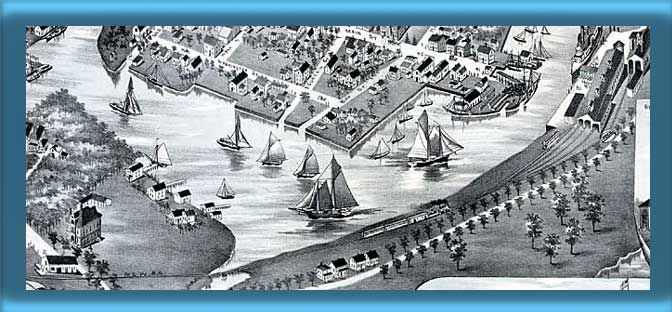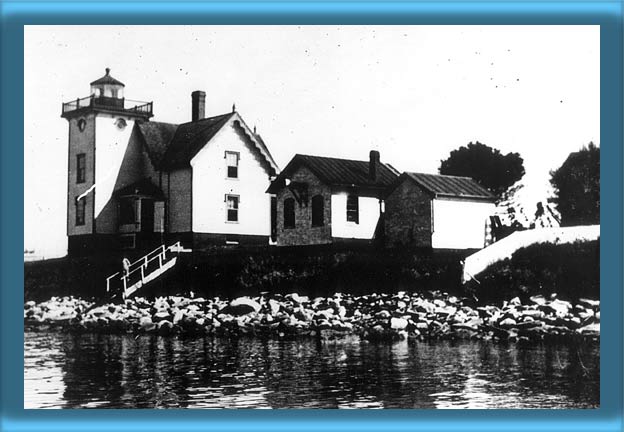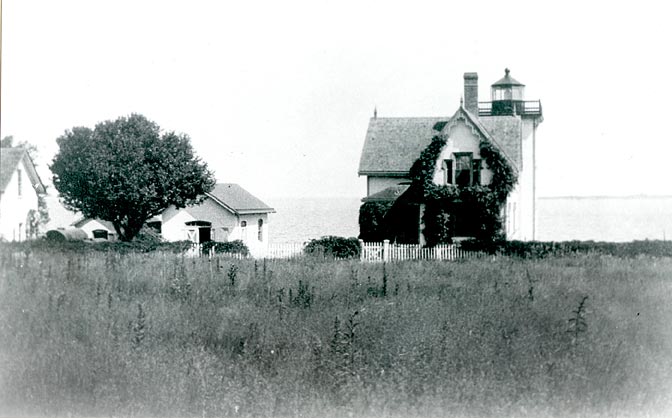| Newport and Wickford Railroad Line and Steamship Terminal |
|---|
 |
| Library of Congress, Prints & Photographs Division,G3774.N54A3 1888 .O2 |
The land at the northern tip of Conanicut Island was owned by the Conanicut Land Company. The Newport and Wickford Railroad and Steamboat Company rented land form the Conanicut Land Company for a small beacon and fog signal. Even with this aid the Eolus ran a ground off the northern tip of Conanicut Island during a winter storm in 1886.
In 1882 a petition for a government lighthouse on the northern tip of Conanicut Island was started. After enough signatures were collected it was sent to the Lighthouse Board in 1883. On July 7, 1884 Congress appropriated $18,000 to build the lighthouse. The Board purchased a 200-foot strip of land for the lighthouse, but construction was delayed because one of Conanicut Land Company's owners, who signature was required, was in Europe.
The Conanicut Lighthouse, a square wooden tower attached to a keeper's dwelling, was completed in 1886. It was first lighted on April 1. It was considered an easy lighthouse to serve at because of its location. It was Lighthouse Board policy to place keepers who served at offshore or remote lighthouses at easy lighthouses like Conanicut Lighthouse.
Conanicut Lighthouse's first keeper was Horace Arnold. He had served at Conimicut Lighthouse for twelve years before he requested a transfer to Conanicut Lighthouse. The years at Conimicut Lighthouse had been hard years for Arnold. In 1874, the stone keeper's dwelling attached to the light was hit by ice floes and was destroyed. Arnold had to jump onto a passing ice floe to avoid drowning. He was adrift for several hours before he was rescued by a passing tug. His eight year old son Leon was later killed when he fell out of a window at the lighthouse.
Arnold remained at the lighthouse until he died in 1914. His son Philip was appointed as the temporary keeper. He wanted to remain at the lighthouse but the Bureau of Lighthouses appointed Elmer Newton as the new keeper. He served at Conanicut lighthouse until it was discontinued in 1933. Its lantern and Fresnel lens were removed when the lighthouse was closed.
A forty foot skeleton tower replaced the light. It was equipped with a 375-mm lens lantern as the primary light and a 300-mm lens lantern as the backup light . It was extinguished during World War II so it couldn't be used as an aid to navigation by German U-boats. It was relighted at the end of the war and remained in service until the 1980's.
Conanicut Lighthouse was sold at auction in 1934 for $2,874. The high bidders were Mahlon and Ida Dunn. It has changed little since then.

